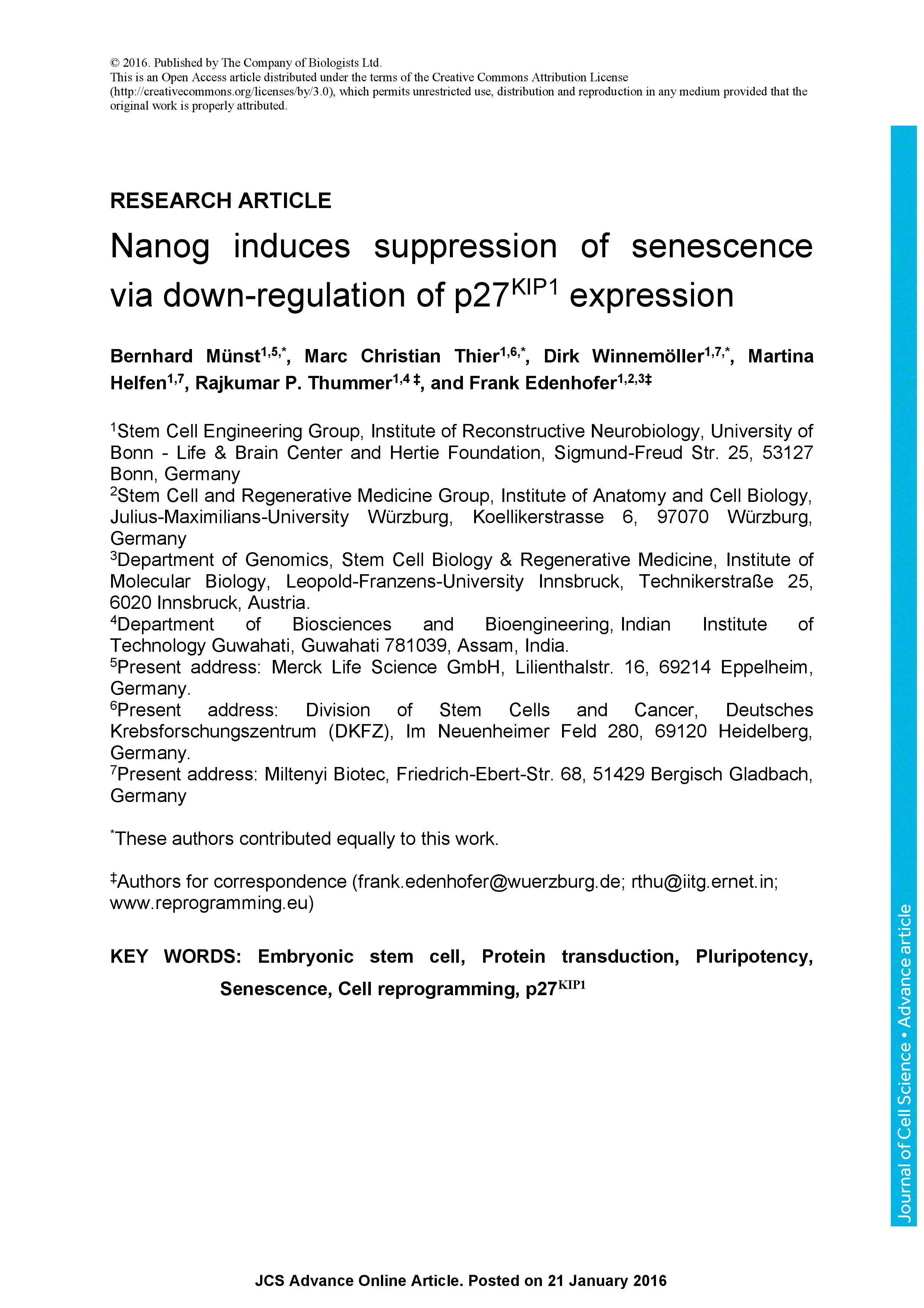A comprehensive analysis of the molecular network of cellular factors establishing and maintaining pluripotency as well as self renewal of pluripotent stem cells is key for further progress in understanding basic stem cell biology. Nanog is necessary for the natural induction of pluripotency in early mammalian development but dispensable for both, its maintenance as well as its artificial induction. To gain further insight into the molecular activity of Nanog we analyzed the gain-of-function of Nanog in various cell models employing a recently developed biologically active recombinant cell-permeant protein, Nanog-TAT. We found that Nanog enhances proliferation of both, NIH 3T3 as well as primary fibroblast cells. Nanog transduction into primary fibroblasts results in suppression of senescence‑associated β‑galactosidase activity. Investigation of cell cycle factors revealed that transient activation of Nanog correlates with consistent down-regulation of cell cycle inhibitor p27KIP1. By chromatin immunoprecipitation analysis we confirmed bona fide Nanog binding sites upstream to the p27KIP1 gene, establishing a direct link between physical occupancy and functional regulation. Our data demonstrates that Nanog enhances proliferation of fibroblasts via transcriptional regulation of cell cycle inhibitor p27 gene.
Nanog induces suppression of senescence via down-regulation of p27KIP1 expression
Present address: Merck Life Science GmbH, Lilienthalstr. 16, 69214 Eppelheim, Germany
Present address: Division of Stem Cells and Cancer, Deutsches Krebsforschungszentrum (DKFZ), Im Neuenheimer Feld 280, 69120 Heidelberg, Germany
Present address: Miltenyi Biotec, Friedrich-Ebert-Str. 68, 51429 Bergisch Gladbach, Germany
These authors contributed equally to this work.
Currently Viewing Accepted Manuscript - Newer Version Available
Bernhard Münst, Marc Christian Thier, Dirk Winnemöller, Martina Helfen, Rajkumar P. Thummer, Frank Edenhofer; Nanog induces suppression of senescence via down-regulation of p27KIP1 expression. J Cell Sci 2016; jcs.167932. doi: https://doi.org/10.1242/jcs.167932
Download citation file:
Advertisement
Journal of Cell Science - more than just a journal

People who know JCS well will know that we're more than just a journal and that our community – the cell biology community – really is at the heart of everything we do. Read the full Editorial by Editor-in-Chief Michael Way and Executive Editor Seema Grewal.
2024 Journal Meeting 'Diversity and Evolution in Cell Biology'

Registration is open for our 2024 Journal Meeting Diversity and Evolution in Cell Biology, which aims to bring together evolutionary biologists and cell biologists investigating diverse aspects of cellular physiology. Submit your abstract by 5 April. Final registration deadline: 3 May 2024.
Workshop: Roles of Lipids in Nuclear Homeostasis and Genome Stability

Early-career researchers interested in the roles of nuclear lipids, apply now for one of the ten funded places at this Workshop, which will take place 14-17 October 2024. Application deadline: 19 April.
Reasons to submit to Journal of Cell Science

There are many benefits to publishing in Journal of Cell Science - read more about why you should choose JCS or visit our submission page now.



